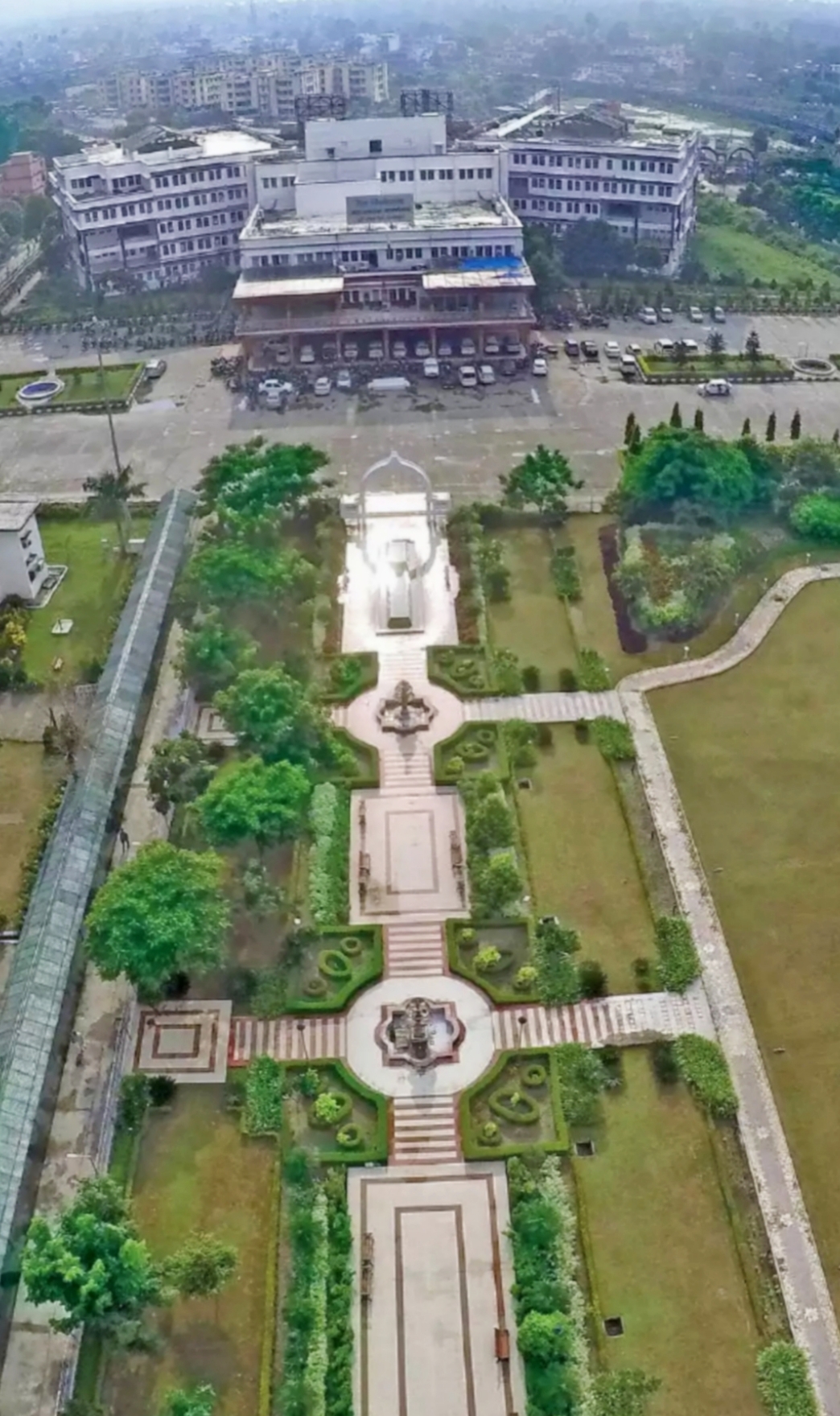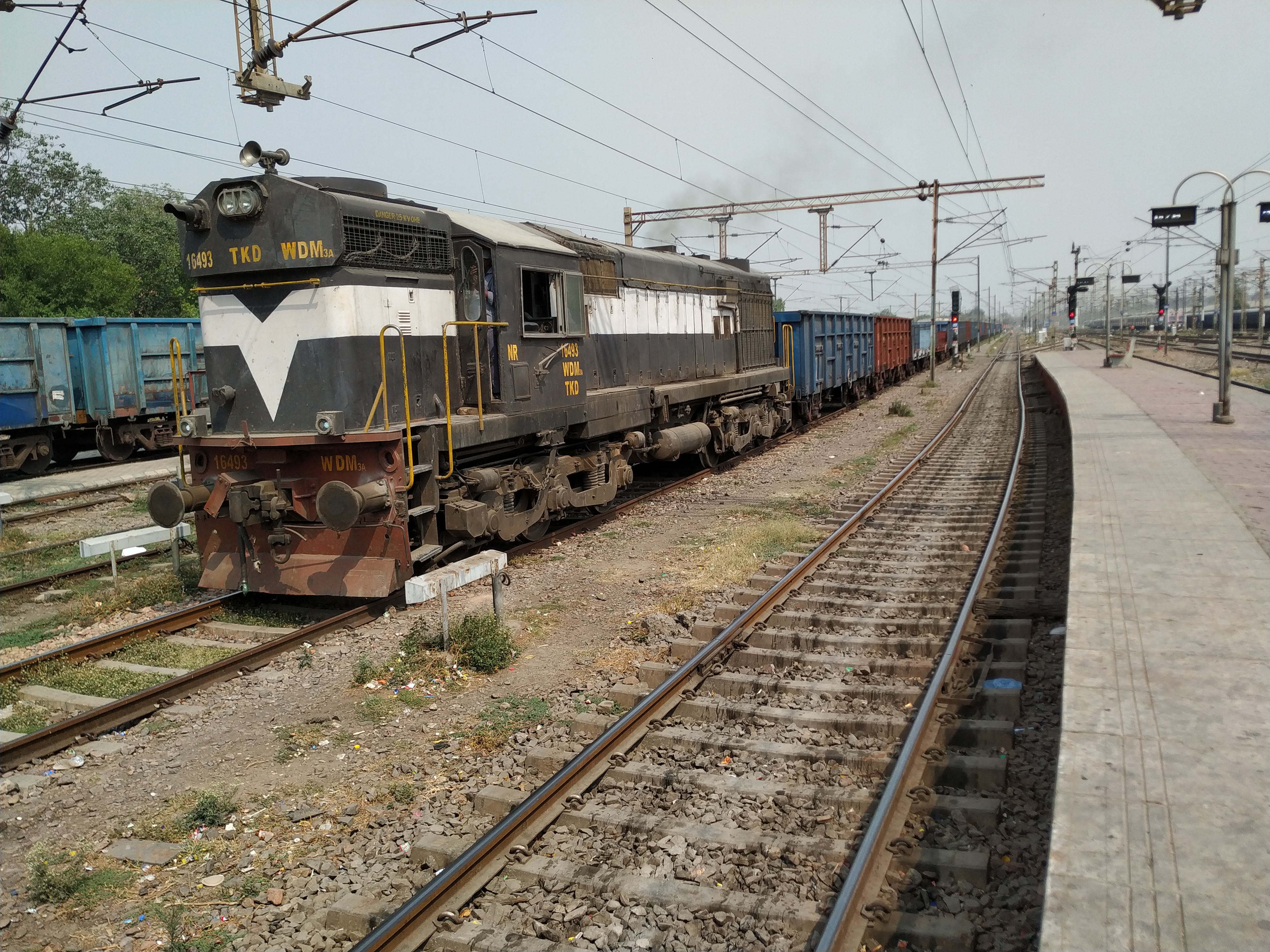|
Saharsa–Barauni Express
The Saharsa–Barauni Express is an Express train belonging to East Central Railway zone that runs between and in India. It is currently being operated with 15275/15276 train numbers on a daily basis. Service The 15275/Saharsa–Barauni Express has an average speed of 38 km/hr and covers 107 km in 2h 50m. The 15276/Barauni–Saharsa Express has an average speed of 29 km/hr and covers 107 km in 3h 40m. Route and halts The important halts of the train are: * * * * * * * * Coach composition The train has standard ICF rakes with a max speed of 110 kmph. The train consists of 22 coaches: * 20 General Unreserved * 2 Seating cum Luggage Rake Traction Both trains are hauled by a Samastipur Loco Shed-based WDM-3A diesel locomotive from Barauni to Saharsa and vice versa. Rake sharing The train shares its rake with 15211/15212 Jan Nayak Express. See also * Barauni Junction railway station * Saharsa Junction railway station * Jan Nayak E ... [...More Info...] [...Related Items...] OR: [Wikipedia] [Google] [Baidu] |
Express Trains In India
Express trains are express rail services of India. Express trains make a small number of stops, unlike ordinary passenger or local trains. Because of their limited stops, these trains are able to obtain the highest speeds of any trains in India. An express train is one where the average speed, excluding halts, is greater than 42 km/h. Including halts the average speed often is below 42 km/h. Although this is pretty slow as compared to international standards, the "Express" trains here mean faster than the ordinary passenger and local trains. In some cases, trains run express where there is an overlapping passenger train service available, and run as passenger train, where there is no supplemental passenger service. Superfast Superfast trains are express trains which make still fewer stops, as compared to ordinary express trains, achieving still shorter journey times. Tickets cost more than ordinary express trains as they have "superfast surcharge" added to them. Tr ... [...More Info...] [...Related Items...] OR: [Wikipedia] [Google] [Baidu] |
East Central Railway Zone
The East Central Railway (abbreviated ECR) is one of the 19 railway zones in India. It is headquartered at Hajipur and comprises Sonpur, Samastipur, Danapur, Pt. Deen Dayal Upadhyaya, and Dhanbad divisions. History First set up on 8 September 1996 with headquarters at Hajipur, Bihar, East Central Railway became operational on 1 October 2002 by carving out areas from Eastern and North Eastern Railway zones currently consists of the divisions viz. Dhanbad, Danapur, Mughalsarai of Eastern Railway and Sonpur and Samastipur of North Eastern Railway. The last 13 years of its existence has been full of challenges and every obstacle was dealt in a dedicated manner despite constraints of work force and infrastructure. ECR, has a vast network of 5402.693 track kilometers and 3707.988 route kilometers encompassing the states of Bihar, Jharkhand, Uttar Pradesh and Madhya Pradesh. Out of the route, have been electrified. ECR has been lifeline for the people in its expanse and i ... [...More Info...] [...Related Items...] OR: [Wikipedia] [Google] [Baidu] |
ICF Coach
The Integral Coach Factory (ICF) coach was a conventional passenger coach used on the majority of main-line trains in India. The design of the coach was developed by Integral Coach Factory, Perambur, Chennai, India in collaboration with the Swiss Car & Elevator Manufacturing Co, Schlieren, Switzerland in the 1950s. The design is also called the ''Schlieren design'' based on the location of the Swiss company. The 1st ICF coach had been flagged by then Prime Minister Jawaharlal Nehru on 2 October 1955. The last ICF coach was flagged off by senior technician Shri Bhaskar P. in the presence of Railway Board Chairman Ashwani Lohani on 19 January 2018. Indian Railways intends to phase out ICF coaches and replace all of them with the newer LHB coaches and Multiple-Unit coaches over a period of time, once the codal life of the existing ICF coaches end. Technical Bogie frame The frame of the ICF coach is a fabricated structure made up of mild steel. Main sub-assemblies of bogie frame ... [...More Info...] [...Related Items...] OR: [Wikipedia] [Google] [Baidu] |
Diesel Loco Shed, Samastipur
Diesel & Electric Loco Shed, Samastipur is an engine shed located in Samastipur, in the Indian state of Bihar. Located east of , it falls under the Samastipur railway division. It is the smallest of the three locomotive sheds in the East Central Railway zone. It is exceeded by and , the two largest in the country. History The Railway Board sanctioned construction of Diesel Loco Shed, Samastipur in the year 1996–97. Construction began in 1999. The initial holding capacity was 20 locomotives, which were transferred from the Diesel Loco shed, Gonda. Continuation Major and minor maintenance schedules of locomotives are carried out. The shed is ISO 9001:2000, ISO 14001:2004 and OHSAS 18001:2007 certified as or 2009. The shed is divided into Light Schedule Repair Section, Heavy Schedule Repair Section, Heavy Repair (Mechanical), Heavy Repair (Electrical), Bogie Section, Machine Shop and Training Centre. Locomotives References External links * Central Railway - O ... [...More Info...] [...Related Items...] OR: [Wikipedia] [Google] [Baidu] |
WDM-3A
The Indian locomotive class WDM-3A is a class of diesel–electric locomotive that was developed in 1993 by Banaras Locomotive Works (BLW), Varanasi for Indian Railways. The model name stands for broad gauge (W), Diesel (D), Mixed traffic (M) engine, with 3300 horsepower (3A). The WDM-3A is a later classification of earlier WDM-2C. They entered service in 1994. A total of 143+ were built at ALCO and Banaras Locomotive Works between 1994 and 2003 with rest of the 1246 units being rebuilt from WDM-2 which made them the most numerous class of mainline diesel locomotive until the WDG-4. The WDM-3A is one of the most successful locomotives of Indian Railways serving both passenger and freight trains for over 26 years. A few WDM-3A units were exported to neighboring countries like Sri Lanka and Bangladesh. Despite the introduction of more modern types of locomotives like WDG-4 and electrification, a significant number are still in use, both in mainline and departmental duties. As ... [...More Info...] [...Related Items...] OR: [Wikipedia] [Google] [Baidu] |
Jan Nayak Express
The 15211 / 15212 Jan Nayak Express is an Express train belonging to East Central Railway zone that runs between and in India. It is currently being operated with 15211/15212 train numbers on a daily basis. This train is named after and in honor to Karpoori Thakur(Jan Nayak), a freedom fighter & ex-Chief Minister of Bihar state Service The 15211/Jan Nayak Express has an average speed of 46 km/hr and covers 1486 km in 32h 25m. The 15212/Jan Nayak Express has an average speed of 47 km/hr and covers 1486 km in 31h 55m. Route & Halts The important halts of the train are: * * * * * * * * * * * * * * * * * * * * * * * * Coach composition The train has standard ICF rakes with a max speed of 110 kmph. The train consists of 23 coaches: * 21 General Unreserved * 2 Seating cum Luggage Rake Traction Both trains are hauled by a Samastipur Loco Shed-based WDM-3A diesel locomotive from Darbhanga to . From Samastipur, the train i ... [...More Info...] [...Related Items...] OR: [Wikipedia] [Google] [Baidu] |
Barauni Junction Railway Station
Barauni Junction railway station (station code BJU), is a railway station in the Sonpur division of East Central Railway. Barauni Junction is located in Barauni city in Begusarai district in the Indian state of Bihar. History In February 2012, The Indian Railways had planned to set up a Railway Station Development Corporation (RSDC) that will work on improving the major railway stations including Muzaffarpur Junction by building and developing Restaurants, shopping areas and food plaza for commercial business and improving passenger amenities. Facilities The major facilities available are waiting rooms, computerized reservation facility and vehicle parking. The vehicles are allowed to enter the station premises. The station also has STD/ISD/PCO telephone booth, toilets, tea stall, fruit stall, dairy stall, meal stall and book stall. Platforms Barauni Junction has 9 platforms. The platforms are interconnected with foot overbridges (FOB). It has two foot overbridges. ... [...More Info...] [...Related Items...] OR: [Wikipedia] [Google] [Baidu] |
Saharsa Junction Railway Station
Saharsa Junction railway station is a main railway station in Saharsa district, Bihar. Its code is SHC. It serves Kosi Division area. The station consists of 5 platforms.This railway junction has been certified by ISO:14001:2015 for environmental management. Due to less railway facility, less expansion of rail network in Supaul & Madhepura district's people used to catch trains from Saharsa instead of their own stations. It is the main railway junction of Kosi division. Strategic importance It is planned to be the largest and busiest railway station in Samastipur railway division after the completion of Saharsa–Forbesganj and Saharsa–Darbhanga routes as it will be a Source-Terminus station of many premium and other trains as well as a major stoppage of ongoing trains. Recently, Saharsa Junction railway station has been selected under Railway Privatisation scheme making the facilities and infrastructure matching the world class level. Saharsa Jn rail yard is the first LHB ... [...More Info...] [...Related Items...] OR: [Wikipedia] [Google] [Baidu] |
Transport In Saharsa
Transport (in British English), or transportation (in American English), is the intentional movement of humans, animals, and goods from one location to another. Modes of transport include air, land (rail and road), water, cable, pipeline, and space. The field can be divided into infrastructure, vehicles, and operations. Transport enables human trade, which is essential for the development of civilizations. Transport infrastructure consists of both fixed installations, including roads, railways, airways, waterways, canals, and pipelines, and terminals such as airports, railway stations, bus stations, warehouses, trucking terminals, refueling depots (including fueling docks and fuel stations), and seaports. Terminals may be used both for interchange of passengers and cargo and for maintenance. Means of transport are any of the different kinds of transport facilities used to carry people or cargo. They may include vehicles, riding animals, and pack animals. Vehicles may incl ... [...More Info...] [...Related Items...] OR: [Wikipedia] [Google] [Baidu] |
Transport In Barauni
Transport (in British English), or transportation (in American English), is the intentional movement of humans, animals, and goods from one location to another. Modes of transport include air, land (rail and road), water, cable, pipeline, and space. The field can be divided into infrastructure, vehicles, and operations. Transport enables human trade, which is essential for the development of civilizations. Transport infrastructure consists of both fixed installations, including roads, railways, airways, waterways, canals, and pipelines, and terminals such as airports, railway stations, bus stations, warehouses, trucking terminals, refueling depots (including fueling docks and fuel stations), and seaports. Terminals may be used both for interchange of passengers and cargo and for maintenance. Means of transport are any of the different kinds of transport facilities used to carry people or cargo. They may include vehicles, riding animals, and pack animals. Vehicles may inclu ... [...More Info...] [...Related Items...] OR: [Wikipedia] [Google] [Baidu] |




